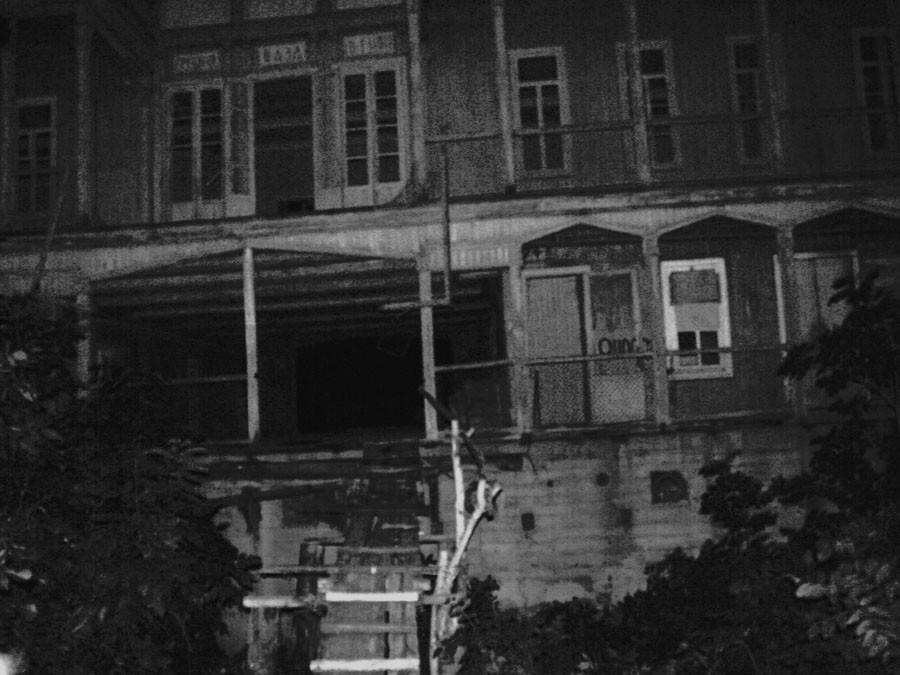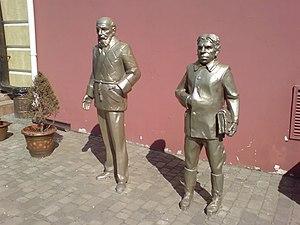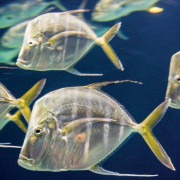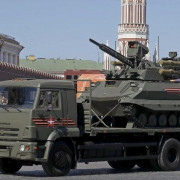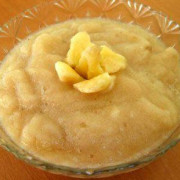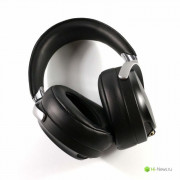Призраки мирового автопрома. duesenberg
Содержание:
Debut

Duesenberg SJ Brunn Riviera Convertible Sedan 1933
The newly revived Duesenberg company set about to produce the Model J, which debuted December 1 at the New York Car Show of 1928. In Europe, it was launched at the «Salon de l’automobile de Paris» of 1929. The first and — at the time of the New York presentation — only example made of the series, the J-101, was a LeBaron sweep panel dual cowl phaeton, finished in silver and black. By the time the Great Depression hit in October 1929, the Duesenberg Company had only built some 200 cars. An additional 100 orders were filled in 1930. Thus, the Model J fell short of the original goal to sell 500 cars a year.
Чем интересна марка Duesenberg
Не смотря на весь глобализм современного мира, автомобильные рынки в разных странах достаточно серьёзно отличаются. Особенно ярким примером является рынок Северной Америки, а в частности США.
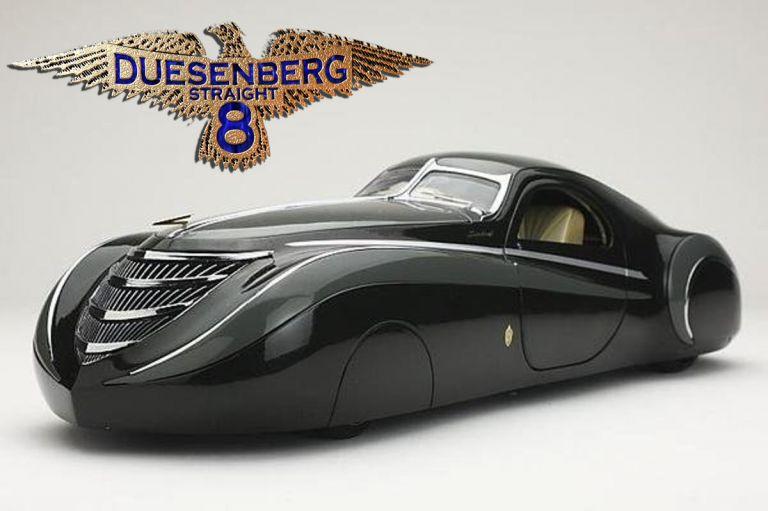
Например, сегодня, в США пользуются популярностью совсем другие модели, да что там модели – целые автостроительные компании, чем на рынках других стран. Причём, те компании, которые популярны в США, или вообще неизвестны в других частях мира, при этом популярные в других частях мира, например в Европе марки, в США, или вообще не продаются, или продвигаются там со скрипом.
Например, в сегменте люксовых автомобилей мировыми лидерами является большая немецкая тройка, БМВ, Мерседес и Ауди. Конечно, модели этих брендов продаются в США, но там они далеко не лидеры. На рынке Северной Америки в этом сегменте лидирует компания Кадиллак, которая за пределами США продаётся очень вяло. Такая же ситуация существует и в других сегментах североамериканского рынка. Правда в сегменте супердорогих авто, где сегодня безраздельно доминируют Бентли и Роллс-Ройс, в США своего бренда нет. Но так было далеко не всегда. Практически до самого начала Второй Мировой Войны, в этом сегменте рынка в Америке безраздельно царствовала американская компания Duesenberg. При этом она активно продавалась и в других частях мира, машины Дюзенберг приобретали европейские монархи и известные люди.
Сегодня, когда в мире наблюдается определённый бум на возрождение старых забытых фирм эта компания, практически, неизвестна. А ведь она, на мой взгляд, могла бы стать одним из первых кандидатов на возрождение. В чём вы сможете убедиться, ознакомившись с историей Дюзенберга в этой статье.
Примечания
- Borgeson, Griffith. (англ.). — New Albany, Indiana: Automobile Heritage Publishing, 2005. — P. 40. — ISBN 0-9711468-7-X.
- Buehrig, Gordon M. (англ.) // Automobile Quarterly (англ.)русск. : magazine / Bailey, L. Scott; Kaufman, Mervyn. — New York, NY USA: Automobile Quarterly. — Vol. 4. — P. 372.
- Ema, Randy . autos.msn.com (2007). Дата обращения 23 ноября 2010.
- . MSN Cars (5 августа 2009). Дата обращения 11 ноября 2009.
- . MSN Cars (5 августа 2009). Дата обращения 11 ноября 2009.
- Kimes, Beverly. Standard catalog of American Cars 1805-1942 (англ.). — Krause publications, 1996. — P. 498. — ISBN 0-87341-428-4.
- Cheetham, Craig. (неопр.). — St. Paul, MN USA: Motorbooks (англ.)русск., 2006. — С. 72. — ISBN 978-0-7603-2572-8.
- Wolff, Raymond A. (англ.) // Automobile Quarterly (англ.)русск. : magazine / Bailey, L. Scott; Kaufman, Mervyn. — New York, NY USA: Automobile Quarterly, 1966. — Vol. 4. — P. 367.
- Ultimate American Cars (неопр.) / Cheetham, Craig. — Motorbooks (англ.)русск., 2006. — С. 147. — ISBN 0-7603-2570-7.
- ↑ Cheetham, Craig. Vintage Cars — The Finest Prewar Automobiles (англ.). — Rochester, United Kingdom: Grange Books, 2004. — P. 31. — ISBN 1840136359.
- ↑ Duesenberg // The Classic Car (неопр.) / Kimes, Beverly Rae. — Des Plaines, IL USA: Classic Car Club of America, 1990. — С. 265. — ISBN 0-9627868-0-2.
- Liquid Diamond, info@liquiddiamond.it. (недоступная ссылка). Cromoclassico.com. Дата обращения 23 ноября 2010.
- Auto Editors of Consumer Guide. . Howstuffworks.com. Дата обращения 23 ноября 2010.
- Melissen, Wouter . Ultimatecarpage.com (2004). Дата обращения 23 ноября 2010.
- Rodgers, Robert S. . Deloreanmotorcar.com (30 апреля 2010). Дата обращения 23 ноября 2010.
- Auto Editors of Consumer Guide. . Howstuffworks.com (13 июня 2007). Дата обращения 23 ноября 2010.
- Duesenberg // The Classic Car (неопр.) / Kimes, Beverly Rae. — Des Plaines, IL USA: Classic Car Club of America, 1990. — С. 264. — ISBN 0-9627868-0-2.
- Leno, Jay . Popular Mechanics. Hearst Communication (22 февраля 2009). Дата обращения 31 мая 2012.
- Лычавко А. Э. Автомобили-легенды. — Минск, 2007. — С. 32—33. — 128 с. — 3000 экз. — ISBN 978-985-13-8842-0.
Модификации
SJ LaGrande Dual-Cowl Phaeton (1935)
SJ
Фред Дюзенберг разработал мотор с компрессором мощностью 320 л. с., который установили на модель SJ. Его крейсерская скорость составляла 170 км/ч, максимальная до 225 км/ч на третьей передаче. Он разгонялся от 0 до 100 км/ч за 8 секунд, до 161 км/ч за 17 секунд. Колёсная база составляла 3620 мм, масса — около 2500 кг. Шасси стоило довольно дорого (11750 долларов), поэтому было изготовлено 36 шасси. Поскольку компрессор расположили рядом с мотором, то хромированные выхлопные трубы вывели наружу. Они стали товарным знаком авто Э. Корда с компрессорами.
Также такие трубы начали устанавливать на авто модели SJ с атмосферными моторами. Реклама гласила: «Единственным автомобилем, который мог обогнать Duesenberg, был другой Duesenberg, но только с согласия первого водителя» (англ. The only car that could pass a Duesenberg was another Duesenberg — but only with the first driver’s consent). В 1930-х годах Duesenberg стал любимым авто гангстеров (в частности Аль Капоне) благодаря скорости и возможности установить защиту из металлических листов.
SSJ
Было изготовлено два коротких шасси с базой 3200 мм и мотором мощностью до 400 л. с. с двойным карбюратором «бараний рог». Коллектор карбюратора имел две секции, каждая из которых разделялась на ещё две секции. Кузова авто изготовила Central Manufacturing Company, дочерняя компания Auburn. Запасное колесо размещалось сзади снаружи кузова. Один родстер в 1935 году купил актёр Гэри Купер, другой годом позже арендовал Кларк Гейбл. Оба актёра устраивали гонки по холмам Голливуда на своих родстерах.
JN
Обозначение JN официально не использовалось компанией. Для обновления устаревшей конструкции шасси были проданы кузовной фирме Rollston, которая в 1935 году изготовила десять авто. Они получили 43,2-сантиметровые колёса вместо 48,3-сантиметровых, новую панель приборов. Форсированные JN маркировались, как SJN соответственно.
Duesenberg Special
Mormon Meteor
С рекламной целью в 1935 году был изготовлен скоростной автомобиль Mormon Meteor I. Открытый кузов облегчили, 6,9-литровый мотор с компрессором получил двойной карбюратор «бараний рог», мощность возросла до 400 л. с. Была несколько изменена конструкция подвески. В октябре 1935 года авто проехало за час 247,79 км, а 24-часовую гонку прошло со скоростью 218,18 км/ч. Такой результат не повторяли до 1961 года. После установки нового мотора Curtiss V-1570 от истребителя в 650 л. с. авто получило обозначение Mormon Meteor II. В 1936 году оно поставило несколько новых рекордов, достигнув на 500 км скорости 264,69 км/ч. В 1938 году двигатель Curtiss V-1570 сняли и вернули старый. Следующая машина с индексом Mormon Meteor III получила в 1939 году закрытую кабину, аэродинамический киль и новый самолётный агрегат. В мае 1940 года на этом автомобиле 17-летний Марвин Дженкинс наездил за сутки более 4800 километров, показав среднюю скорость 265 км/ч и максимальную 314 км/ч. Этот рекорд был превзойдён только 50 лет спустя.
Оба автомобиля сохранились до наших дней: первый находится в частном автомобильном музее Петерсона (Лос-Анджелес), второй — в государственном музее штата Юта.
References
Citations
- ^
- ^
- ^ , p. 40
- ^ Kimes, Beverly (1996). Standard catalog of American Cars 1805-1942. Krause publications. ISBN 0-87341-428-4.
- ^ , p. 42
- , in Automobile Quarterly, Spring 1966
- , p. 43
- ^ , p. 367
- ^
- ^
- ^ , Automobile Quarterly, p. 372
- ^
- Craig Cheetham (ed.). Ultimate American Cars. Amber Books Ltd. ISBN 0-7603-2570-7.
- , p.77
- , p. 368
- Georgano, G.N. Cars: Early and Vintage, 1886–1930. London: Grange-Universal, 1985.
Sources
«Directory of Wisconsin companies». thebubbler.com. Retrieved April 6, 2012.
Sources
- Kimes, Beverly (1996). Standard catalog of American Cars 1805-1942. Krause publications. ISBN 0-87341-428-4.
6.
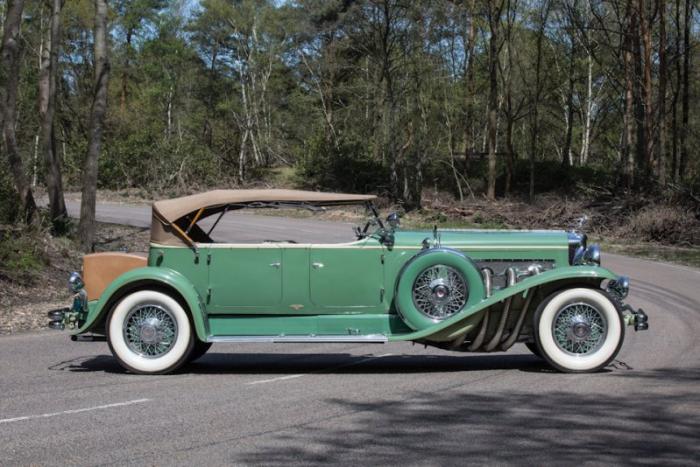
Конструкция Duesenberg J хоть и модернизировалась до самого закрытия марки в 1937 году, но всё-таки в целом была стремительно устаревающей. Например, с двигателем сочеталась несинхронизированная трёхступенчатая механическая коробка передач — попытки адаптировать четырёхступенчатую трансмиссию провалились, поскольку она не выдерживала работы с таким мощным мотором. Учитывая финансовый кризис в США, большинство двигателей и шасси были выпущены в 1929 и 1930 годах, но ставились на продаваемые и позже машины. Это обернулось тем, что покупателям доставались очевидно устаревшие автомобили, а для современных автоисториков такой тандем подарил головную боль — каким годом датировать Duesenberg J, если у него шасси, двигатель и кузов могут иметь различающиеся даты выпуска?!
Supercharged version (SJ)
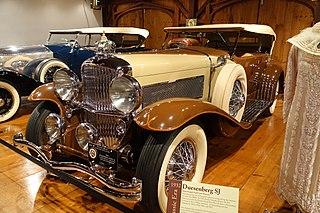
1932 SJ Dual-Cowl Phaeton
1935 SJ LaGrande Dual-Cowl Phaeton
A Duesenberg marketing slogan was, «The only car that could pass a Duesenberg was another Duesenberg—and that was with the first owner’s consent.»
Reinforcing this claim was the powerful 320 hp (239 kW) supercharged «SJ» model Developed on the 142.5 in (362 cm) wheelbaseby Fred Duesenberg and introduced in May 1932.. It reputed to be capable of 104 miles per hour (167 km/h) in second gear and have a top speed of 135–140 mph (217–225 km/h) in third. Zero-to-60 mph (97 km/h) times of around eight seconds and 0–100 mph (0–161 km/h) in 17 seconds were reported for the SJ in spite of the unsynchronized transmissions, at a time when even the best cars of the era were not likely to reach 100 mph (160 km/h). Duesenbergs generally weighed around two and a half tons; up to three tons was not unusual, considering the wide array of custom coachwork available.
The SJ’s supercharger was located beside the engine; the vertical driving shaft necessitated a redesigned exhaust manifold arrangement; originally this took the form of a one-piece eight into one Monel manifold that re-routed the exhaust away from the engine, outside the engine compartment and through a single hole in the right front fender. The eight port manifold was found to be prone to cracking and was quickly superseded by a second manifold arrangement that routed four branches through the right side panel of the hood and right front fender. At least one supercharged car retains its original eight port manifold while most can be recognized by the four exposed exhaust pipes encased within bright flexible metal conduit tubes, a design which Cord registered as a trademark and used in his supercharged Cords and Auburns.[citation needed] The flamboyant external exhaust pipes were offered both as an option on new normally aspirated Model Js and retrofit to earlier Model Js.
Fred Duesenberg died of pneumonia on July 26, 1932, resulting from injuries sustained in an automobile accident in which he was driving a Murphy SJ convertible. His brother, Augie, took over Fred’s duties as chief engineer and Harold T. Ames became president of Duesenberg, Inc. Only 36 SJs were ever built.
Duesenberg Special
Duesenberg Special, a.k.a. Mormon Meteor
With financing from sponsors, Ab Jenkins commissioned the Duesenberg Special as a speed record car. It was built in 1935 on a supercharged Duesenberg Model J rolling chassis with a standard wheelbase, a modified front axle, and a non-standard high rear axle ratio. The engine was highly tuned by Augie Duesenberg. High performance parts developed for the Special, especially the «ram’s horn» twin-carburetor inlet manifold, would be used on later supercharged Js. In October 1935, Jenkins drove the car to a one-hour record of 153.97 mph (247.79 km/h) and a twenty-four-hour record of 135.57 mph (218.18 km/h) at a circuit on the Bonneville Salt Flats. The 24-hour record would be held until 1961. The car was renamed «Mormon Meteor» after a Curtiss Conqueror aircraft engine was installed in place of the Duesenberg engine.
SSJ
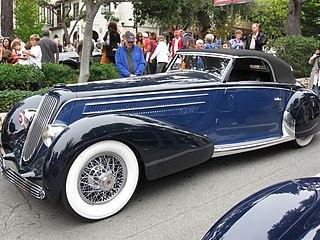
Duesenberg Model J cabriolet with a custom body by Graber
The short-wheelbase supercharged J, referred to by the public as the SSJ, had an extra-short wheelbase of 125 in (3,200 mm) and an engine delivering close to 400 hp (298 kW) through the use of the dual-carburetor «ram’s horn» manifold developed for the Duesenberg Special. The «ram’s horn» manifold has two branches, each of which splits into two more branches.
Only two were built; both had lightweight open-roadster bodies produced by Central Manufacturing Company, an Auburn subsidiary in Connersville, Indiana. At the rear, each short-wheelbase roadster had an external spare tire and smaller “later-style” round taillights.[citation needed]
The first short-wheelbase roadster was sold to the actor Gary Cooper in 1935. The other «SSJ» was lent by the company to actor and established Duesenberg customer Clark Gable in 1936. Cooper and Gable would race each other in the Hollywood Hills in these cars.
Background
1930 J Walker La Grande Torpedo Phaeton
E. L. Cord, the owner of Auburn Automobile, and other transportation firms, bought the Duesenberg Motor Corporation on October 26, 1926 for the brothers’ engineering skills, talent and brand name. He intended to produce a car to rival the size, power, and luxury of top European brands such as Hispano-Suiza, Isotta Fraschini and Rolls-Royce,.
After Cord’s takeover, the new company was renamed «Duesenberg, Inc.» Fred would continue in the new organization with the title of vice president in charge of engineering and experimental work. Fred’s brother August, who had played an important role in the development of the Model A and its variant, the rare X, had nothing to do with the initial design of the J and had no formal connection with Duesenberg, Inc. until later. According to the expert Marshall Merkes, «Cord did not want Augie around.» However, all Duesenberg racing cars produced after 1926 were built by Augie in an enterprise that functioned separately, and in a building apart from the main Duesenberg plant. He was also responsible for a number of engineering achievements like the superchargers developed for both the Auburn and Cord motorcars.
14.
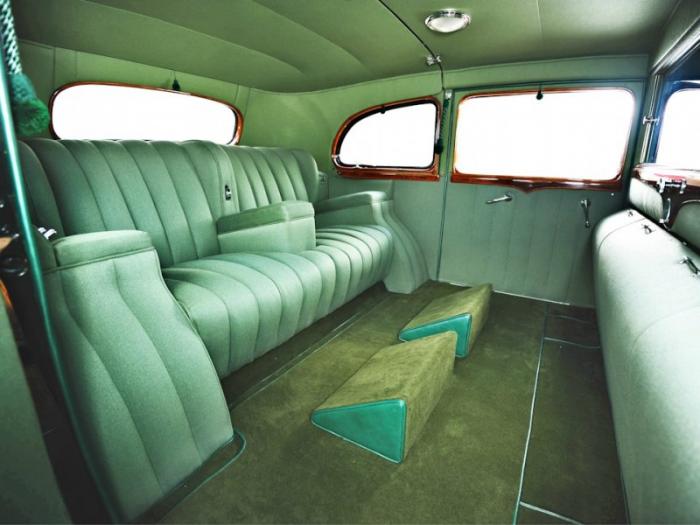
Первоначально основная масса автомобилей Duesenberg была сосредоточена в Нью-Йорке — финансовой столице США, но с Великой депрессией «центр» Duesenberg переместился в Голливуд. Влияние автомобиля было столь велико, что некоторые актёры фотографировались с чужими машинами, чтобы произвести впечатление — это срабатывало! Ну а официальная рекламная кампания Duesenberg также поражала своей эффективностью и эффектностью. Слоганом модели J был весьма нескромный девиз «The World’s Finest Motor Car», а машины на рекламе отсутствовали — достаточно было иллюстрации успешного мужчины или женщины, в изображении которых читался их род деятельности, а также сопроводительной фразы «He/She drives a Duesenberg».
Etymological note
A model J in front of the birthplace of Fred and Augie Duesenberg in Kirchheide, Germany
The origin of the American slang word «doozy» or «doozie», meaning something excellent or powerful, is unknown. Merriam-Webster completely rejects any attribution to the automobile, noting that doozy originally appeared as «dozy» in eastern Ohio in 1916 — four years before the production of the first Duesenberg vehicles. They also claim there is little evidence connecting the Duesenberg and doozy during the 1920s and 1930s, when the car was most popular. «Dozy» is akin to the verb «dozen» that is semantically and etymologically related to «daze» and that is attested in slang terms such as «.»
Duesenberg J («Дюзенберг Джей») 1928-1936
Когда Эррет Лоббан Корд назвал Duesenberg J «самым прекрасным автомобилем в мире», это не было преувеличением. Почти по всем показателям он превосходил конкурентов из Rolls-Royce («Роллс-Ройс»), Hispano-Suiza («Испано-Сюиза») и Mercedes-Benz («Мерседес-Бенц»).
Модель «J», как и модель «А», сочетала обычное шасси с передовым, очень мощным и тщательно проработанным двигателем, имела широкий выбор кузовов, чего не мог предложить ни один американский изготовитель. Был выбор и по колесной базе (от 3,6 до 3,9 м), а один покупатель заказал машину с базой 4,5 м, которую назвал Throne Car («Королевский автомобиль»).
|
Модель Duesenberg J бесспорно достойный конкурент таким автомобилям, как Rolls-Royce, Bugatti, Mercedes-Benz и Hispano-Suiza. Была ли она действительно самой прекрасной в мире моделью, пусть каждый решит самостоятельно. На фото изображена модель 1929 г. с кузовом от Murphy («Мэрфи») |
Ходовая часть с полуэллиптическими рессорами, гидропривод тормозов и трехступенчатая коробка передач были довольно обычными, но 6,9-литровый двигатель стал лучшим в мире. Эта рядная «восьмерка» имела два верхних распредвала и по 4 клапана на цилиндр. Уже в 1928 г. компания применила схему, которую большинство других престижных изготовителей использовало лишь через 60 лет.
|
Шасси модели «3» стоило от 8,5 тыс. долларов, а цена готового автомобиля, подобного этому экземпляру 1930 г., в три раза превышала стоимость Cadillac. Продажи машин были устойчивы и во время великой депрессии. Вероятно, их покупатели были хорошо защищены от перепадов в экономике. С таким огромным кузовом модель «J» могла развить скорость 187 км/ч |
Фирма Lycoming, еще одно отделение империи Корда, выпускала двигатели мощностью не менее 265 л.с., что в два раза превышало показатели любого иного американского мотора тех лет. Сомневающимся стоит напомнить, что эта машина при установке величественного кузова имела собственную массу более 2270 кг и развивала скорость 187 км/ч.
Первое время цена шасси составляла 8,5 тыс. долларов (к 1921 г. она возросла до 9,5 тыс.), на него монтировали великолепные кузова и стоимость автомобиля была не менее 17 тыс. долларов. В то время самая дорогая модель Cadillac («Кадиллак») стоила 7 тыс. долларов. Считается, что «J» была одной из самых дорогих и эксклюзивных серийных машин всех времен.
Удивительно, что продажи модели «J» и ее варианта «SJ» с наддувом медленно, но верно продолжались и во время Великой депрессии. К 1936 г., когда в Индианаполисе построили последний экземпляр, было продано 470 машин с огромным выбором кузовов и одинаковой облицовкой радиатора. Без сомнения, тогда это был самый лучший американский автомобиль.
|
Этот 6,9-литровый 8-цилиндровый двигатель имел два распредвала и 32 клапана. Даже без нагнетателя он развивал 265 л.с., что в два раза превышало мощность любого другого американского мотора тех лет |
| Двигатель: | Р8 с двумя верхними распредвалами |
| Диаметр цилиндра и ход поршня: | 95,25×120,6 мм |
| Рабочий объем: | 6876 см3 |
| Максимальная мощность: | 265 л.с. |
| Коробка передач: | 3-ступенчатая механическая |
| Шасси: | на стальной раме |
| Подвеска: | зависимая на полуэллиптических рессорах |
| Тормоза: | барабанные |
| Кузов: | открытый или закрытый |
| Максимальная скорость: | 187 км/ч |
В 1935-36 гг. было изготовлено 10 экземпляров «JN» с базой 3,9 м и колесами меньшего (17 дюймов) диаметра. Два из них получили двигатель «SJ» с наддувом — отсюда и название «SJN».
Specifications
| Duesenberg Model J engine | |
|---|---|
| Overview | |
| Manufacturer | Duesenberg |
| Production | 1928-1937 |
| Layout | |
| Configuration | Straight-eight engine |
| Displacement | 420 cu in (6,900 cc) |
| Cylinder bore | 3.74 in (95 mm) |
| Piston stroke | 4.76 in (121 mm) |
| Block material | cast iron |
| Head material | cast iron |
| Valvetrain | , 4 valves per cylinder |
| Compression ratio | 5.7:1 |
| Combustion | |
| Supercharger | Duesenberg centrifugal (optional from 1932) |
| Fuel system | Single updraft Schleber carburetor |
| Fuel type | gasoline |
| Cooling system | water-cooled |
| Output | |
| Power output |
|
| Chronology | |
| Predecessor | Duesenberg Model A engine |
The straight eight model J motor was based on the company’s successful racing engines of the 1920s and though designed by Duesenberg they were manufactured by Lycoming, another company owned by Cord. In normally aspirated form, it produced 265 horsepower (198 kW) from dual overhead camshafts and four valves per cylinder. It was capable of a top speed of 119 mph (192 km/h), and 94 mph (151 km/h) in 2nd gear. Other cars featured a bigger engine but none of them surpassed its power. It was also both the fastest and most expensive American automobile on the market.
Legacy
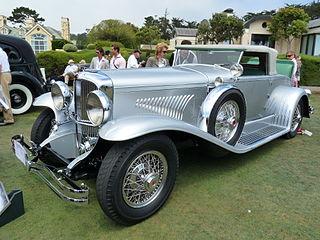
1929 Duesenberg J Murphy Convertible Coupe
Duesenberg ceased production in 1937 after Cord’s financial empire collapsed. However, two more Duesenbergs were completed between 1937 and 1940. The first one was delivered by the coachbuilder Rollson to the German artist Rudolf Bauer in April 1940; it is both the longest Duesenberg and the last one delivered. The last one ever made was assembled from leftover parts between 1938 and 1940.
Duesenberg became far less popular during World War II, and by 1941 to 1942, used specimens were abundant and cheap, with advertised prices averaging around $700 for the cars in excellent condition. Even still, a few used Model Js were advertised for around $300 to $400, with some ultimately selling for only $100 or $200.[citation needed]
Business rebounded in the 1950s, when classic and vintage cars became popular among collectors. Several Model Js were advertised in The New York Times in the fall of 1950, at prices as low as $500, though an exceptional restored example could exceed $2,000 which was still within the reach of the average working American.
By 1959 a decent example could not be bought for less than $4,000, and an exceptionally fine specimen could approach $10,000. A record price of $12,000 had been paid for a Duesenberg J in a private sale that year. In 10 years’ time, by 1969, a Model J could fetch anywhere between $20,000 and $75,000. A record price of $205,000 was set at an auction in 1974 for a model J, surpassing Adolph Hitler’s personal 770K Mercedes, which sold for $153,000 the year prior.
The Duesenberg Special, a.k.a. «Mormon Meteor», was sold at an auction by Gooding & Co. in August 2004 for $4.5 million. Another SJ sold for $4.4 million at RM Auctions in Monterey, California, in 2007.
Liberace used a replica Dusenberg SJ encrusted with Austrian rhinestone crystals during his stage performances. The vehicle later went on to be exhibited at the Liberace Museum in Las Vegas, Nevada, and at The Cosmopolitan of Las Vegas, and its current location is at the «Liberace Garage» located in Las Vegas as well.
In 2018 a Duesenberg SSJ that was formerly owned by Gary Cooper was sold at auction for $22 million. This made it the most expensive American car ever sold.
Примечания
- . Helipad-consulting.com (3 сентября 2007). Дата обращения 23 ноября 2010.
- ↑
- ↑
- ↑
- ↑ . Autoshow.autos.msn.com. Дата обращения 23 ноября 2010.
- ↑ . Auto.howstuffworks.com. Дата обращения 23 ноября 2010.
- ↑
- ↑
- ↑ . Ultimatecarpage.com. Дата обращения 23 ноября 2010.
- by the Auto Editors of Consumer Guide. . Auto.howstuffworks.com. Дата обращения 23 ноября 2010.
- Liquid Diamond, info@liquiddiamond.it. . Cromoclassico.com. Дата обращения 23 ноября 2010.
- . Deloreanmotorcar.com. Дата обращения 23 ноября 2010.
- by the Auto Editors of Consumer Guide. . Auto.howstuffworks.com (13 июня 2007). Дата обращения 23 ноября 2010.
- Georgano, G. N. Cars: Early and Vintage, 1886—1930. (London: Grange-Universal, 1985)
- Apen, John . Businessweek.com (13 апреля 2007). Дата обращения 23 ноября 2010.
History
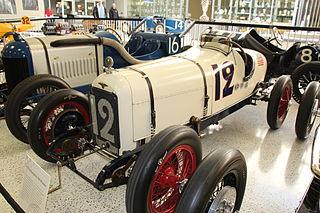
Duesenberg Indianapolis 500 racing car, winner 1922
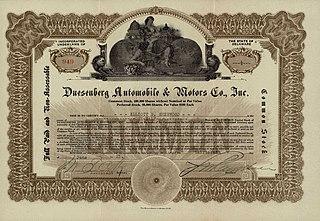
Share of the Duesenberg Automobile & Motors Co., issued 13. June 1921
In 1913, German-American brothers Fred and Augie Duesenberg founded Duesenberg Motors Company, Inc. on University Avenue in St. Paul, Minnesota, to build engines and race cars. The brothers were self-taught engineers and built many experimental cars. Duesenberg cars were considered some of the best cars of the time[citation needed], and were built entirely by hand. In 1914, Eddie Rickenbacker drove a «Duesy» to finish in 10th place at the Indianapolis 500, and Duesenberg won the race in 1922, 1924, 1925, and 1927. The fledgling company sidestepped into aviation engine manufacturing when Colonel R.C. Bolling and his commission acquired a license to produce the Bugatti U-16 for the U.S. Army Air Service. The end of World War I stopped this project before it could ever mature.
In 1921, Duesenberg provided the pace car for the Indy 500, driven by Fred Duesenberg. The same year Jimmy Murphy won the French Grand Prix, becoming the first American to win that race when he drove a Duesenberg to victory at Le Mans.
According to archives of The Des Moines Register, the first Duesenbergs were built at 915 Grand Ave in Des Moines, Iowa.[citation needed]
In the 1970s, Virgil Exner tried to revive Duesenberg, but due to his early death, only concept cars were ever made.
Модель Duesenberg J
Новый владелец, сразу же после её приобретения, дал задание братьям разработать самую роскошную машину в мире. И Фридрих, а именно он занялся разработкой нового автомобиля, с ней блестяще справился. Уже через 2 года родилась модель Duesenberg J.
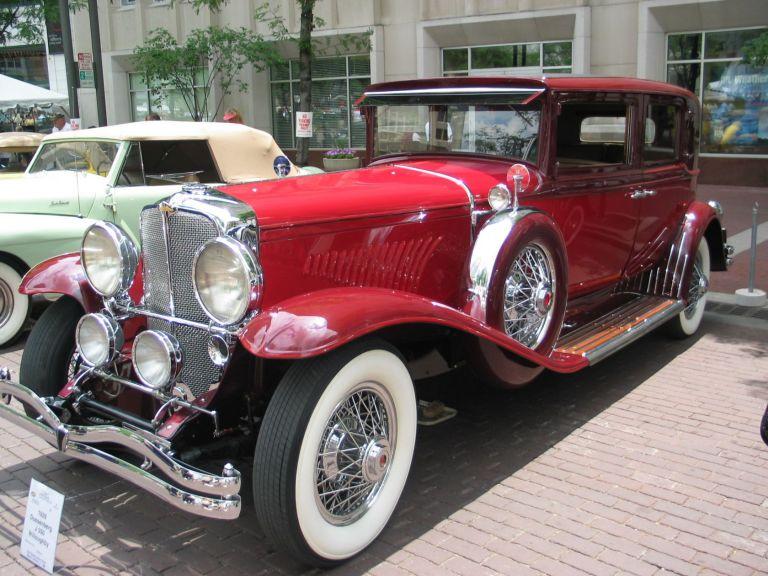
Duesenberg J
Поставки машины заказчикам начались уже после начала Великой Депрессии в 1929 году. В этом году мега дорогая машина продалась тиражом в 200 экземпляров. В следующем 30 году было продано ещё 100 автомобилей.
То есть самое главное у машины был не внешний вид, а техника. А техника была по-настоящему, выдающейся. На машине стоял рядный 8-и цилиндровый силовой агрегат объёмом 7 литров и мощностью 265 л. с., с этим силовым агрегатом, машина могла разгоняться до вполне приличных, даже сегодня, 192 км/час. Такой большой отдачи, для начала века удалось добиться путём установки на него двух распредвалов и 4-х клапанов на цилиндр.

8-и цилиндровый двигатель модели Duesenberg J
Кроме этого шасси модели «J» производилось в трёх вариантах длины:
- Коротком – 3600 мм;
- Длинном – 3900 мм;
- Сверхдлинном – 4000.
Реально, данная модель производилась всего два года, в 1929 и 30 годах, но продавалась вплоть до конца существования фирмы. После 1930-го компания продавала ранее выпущенные автомобильные шасси.
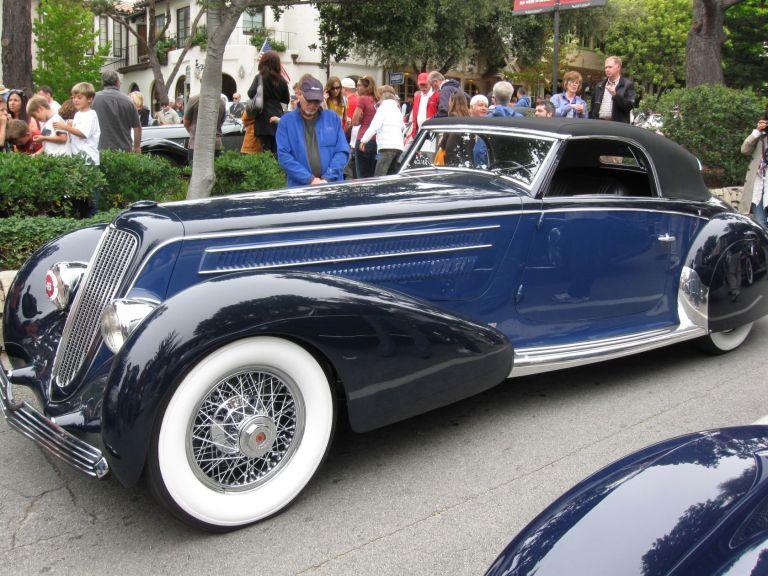
Duesenberg J доработанный кузовным ателье Graber
8.
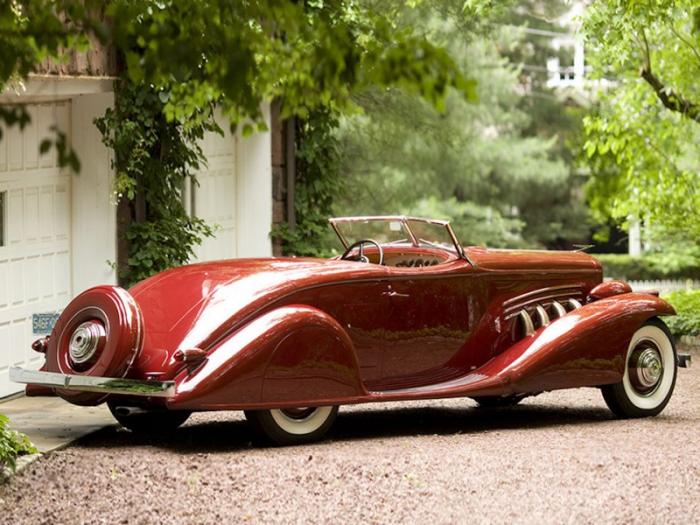
После гибели Фредерика Дюзенберга компанию возглавил его брат Август и уже при нём свет увидели два 400-сильных (Фредерик успел выпустить только 36 машин SJ с мощными 320-сильными двигателями) Duesenberg SSJ. Официально это обозначение никогда не использовалось маркой и было «внутренним» индексом, в котором объединялись наименование модели (J), компрессорный мотор (S — supercharged) и укороченная колёсная база (S — short wheelbase). Обе машины имели кузова от Central Manufacturing Company и предназначались звёздам того времени — актёру Гари Куперу и актёру Кларку Гейблу, имевшему к тому времени во владении Duesenberg J. Впоследствии, как свидетельствуют современники, Купер и Гейбл неоднократно гоняли наперегонки друг с другом на своих Duesenberg SSJ по холмам Голливуда.
